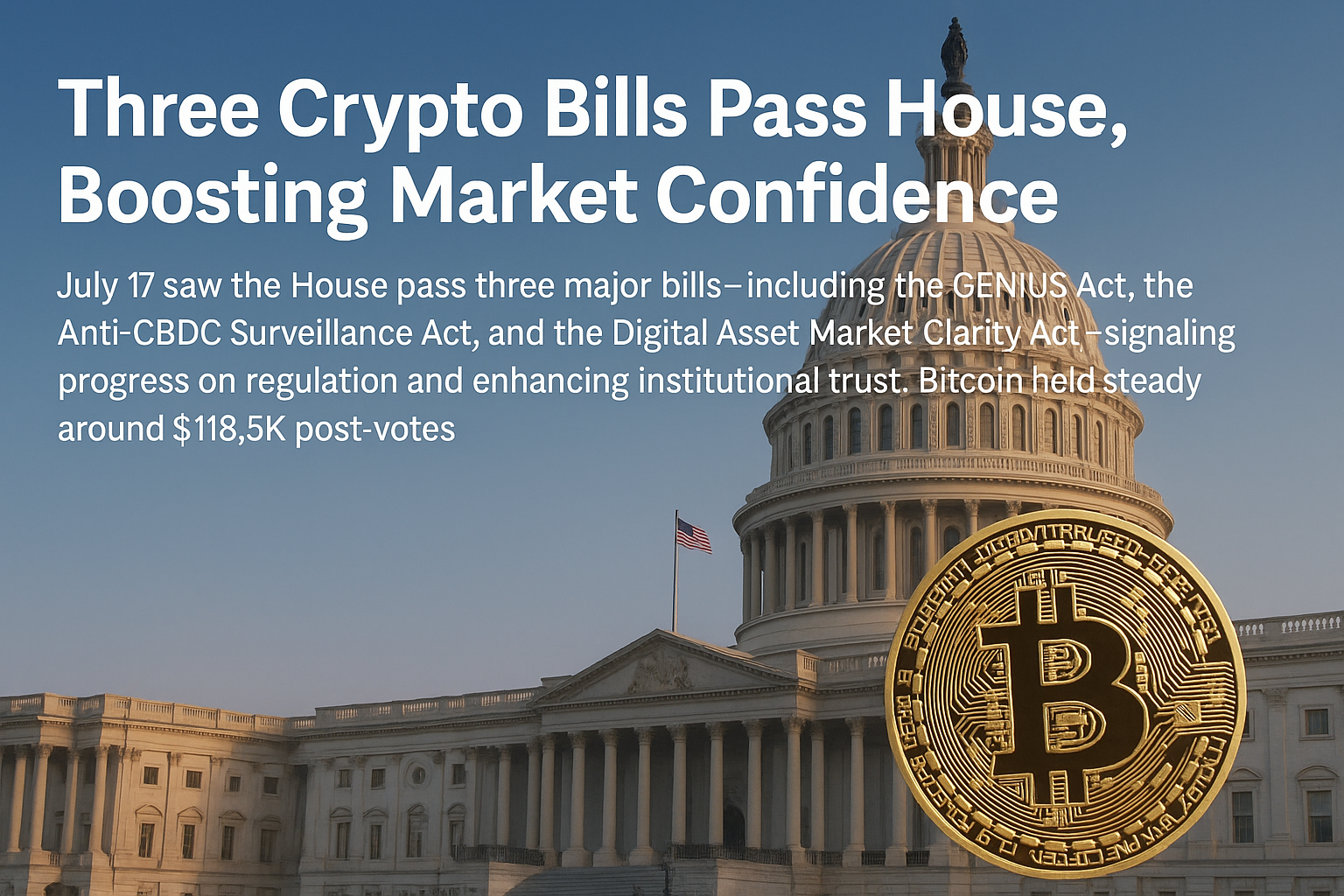In a move hailed as a milestone for the future of cryptocurrency in the United States, the U.S. House of Representatives passed three pivotal pieces of legislation on July 17, sending a clear signal that Washington is finally getting serious about digital asset regulation.
The trio of bills—the GENIUS Act, the Anti-CBDC Surveillance Act, and the Digital Asset Market Clarity Act—mark a watershed moment for the crypto industry. Together, they address everything from innovation funding and consumer protection to regulatory clarity and central bank digital currency (CBDC) oversight.
1. The GENIUS Act: Fueling Innovation and Stability
Standing for Guaranteeing Essential Neutral Infrastructure for Ubiquitous Stability, the GENIUS Act aims to support blockchain and Web3 infrastructure development by encouraging public-private partnerships, providing tax incentives, and removing unnecessary regulatory bottlenecks for startups. Lawmakers argue this bill will help the U.S. remain competitive globally in the digital economy.
“The GENIUS Act helps ensure America is not just a participant, but a leader in blockchain innovation,” said Rep. Annette Williamson (D-CA), one of the bill’s co-sponsors. “We’re building a foundation for the next generation of the internet.”
2. The Anti-CBDC Surveillance Act: Preserving Financial Privacy
This highly debated bill restricts the Federal Reserve from issuing a retail-facing CBDC without explicit congressional authorization. Advocates warn that a government-backed digital dollar could pose surveillance risks and infringe on civil liberties.
“This bill is about drawing a line in the sand,” declared Rep. Tom Emmer (R-MN), who introduced the legislation. “Digital innovation must not come at the expense of American privacy.”
While critics argue it may limit the Fed’s ability to modernize the financial system, privacy advocates celebrated the move as a crucial protection against state overreach.
3. Digital Asset Market Clarity Act: The Long-Awaited Regulatory Compass
Perhaps the most anticipated of the three, the Digital Asset Market Clarity Act seeks to define the roles of the SEC and CFTC more clearly when it comes to cryptocurrencies and tokenized assets. It offers new investor protection guidelines, clarifies how tokens should be classified, and introduces a transitional “safe harbor” framework for new projects.
“This is the blueprint our markets have been asking for,” noted blockchain attorney Nina Park. “Clarity equals confidence—and that leads to capital.”
Bitcoin Responds Calmly
Despite the magnitude of the news, Bitcoin’s price held relatively steady around $118,500 following the legislative wins—suggesting that the market had priced in much of the sentiment or that traders viewed the development as stabilizing rather than shocking.
Institutions, however, may view things differently.
“This could be a turning point for pension funds, hedge funds, and even sovereign wealth vehicles,” said Marc D’Angelo, head of strategy at TitanX Digital. “A clearer regulatory framework unlocks a floodgate of previously sidelined capital.”
A Turning Point for U.S. Crypto Policy?
For years, the U.S. crypto industry has operated in regulatory gray zones, with conflicting guidance from various agencies. This week’s legislative action may represent a pivot toward a more transparent and functional ecosystem—one that encourages innovation while setting clear boundaries.
Global markets are watching. As Europe finalizes MiCA, and Asia expands sandbox programs, America’s three-bill crypto package could serve as a model or at least a spark for further legislative momentum.
Whether you’re a retail investor, DeFi developer, or institutional gatekeeper, July 17 may go down as the day crypto regulation in the U.S. finally matured.




